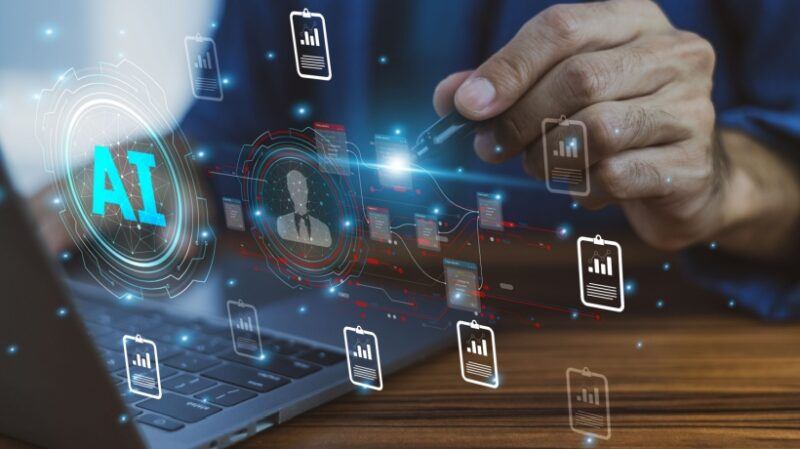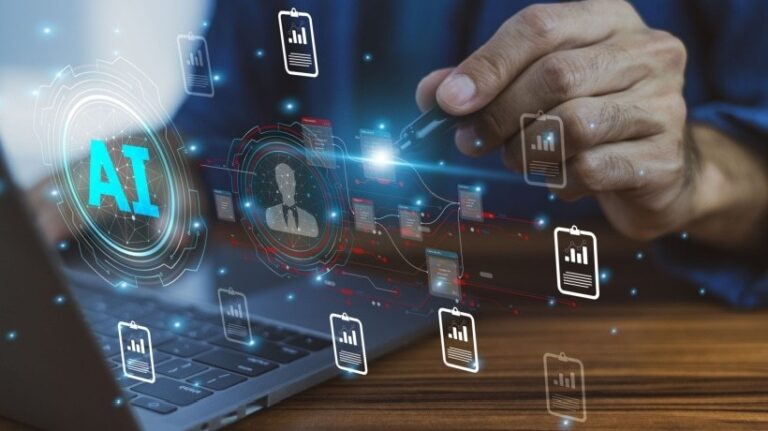
How AI personalizes, automates, and humanizes
The educational environment is undergoing a major transformation due to the rapid rise of artificial intelligence (AI). Once confined to technology labs and automated tools, AI is now permeating classrooms, digital platforms, and even personal learning spaces. This evolution is often referred to as smart learning and represents a shift toward personalized, adaptive, and efficient education that meets the unique needs of every learner. From AI tutors that guide students step-by-step to intelligent systems that assess performance in real-time, the way we learn is fundamentally changing. Smart learning with AI leverages data and intelligent algorithms to create learning experiences that are more engaging, flexible, and effective than ever before.
What is smart learning?
Smart learning refers to the integration of technology, data analytics, and AI into education to enhance the way knowledge is delivered, understood, and applied. It’s not just about putting lessons online, it’s about building a learning ecosystem that intelligently accommodates each learner’s pace, style, and preferences. The main components of smart learning are:
An adaptive learning platform that adjusts lesson difficulty based on performance. An intelligent tutoring system that provides real-time instruction similar to one-on-one coaching. A smart classroom that uses sensors, analytics, and interactive tools to track participation. Automated management tools that free educators from repetitive tasks, from attendance tracking to grading.
Many educational institutions are using document processing AI to digitize and analyze large volumes of educational content (research papers, assignments, reports), making it easier to extract insights and customize learning materials for students.
How artificial intelligence is transforming learning
1. A personalized learning journey
Traditional education treats students as a group, but AI enables individualized instruction. By analyzing each learner’s progress, strengths, and weaknesses, AI can adapt lessons to the learner’s pace. Struggling students receive more practice, while advanced learners are challenged with deeper content. This approach not only increases retention, but also builds confidence and autonomy.
2. Real-time feedback and smart ratings
Previously, students had to wait days for teachers to grade their work. AI-powered rating systems can now provide instant feedback, identify errors, and suggest improvements. There are also benefits for teachers. AI analytics reveals which students need special attention and which topics confuse most learners, allowing for rapid, data-driven interventions.
3. 24/7 support by AI instructors
AI-based chatbots and virtual teaching assistants provide continuous support outside of school hours. They answer questions, provide tips, and explain difficult concepts. This ensures that learning is no longer limited to classroom time. It becomes a continuous process that can be accessed anytime and anywhere.
4. Immersive and interactive learning experience
AI, combined with technologies such as augmented reality (AR) and virtual reality (VR), will allow students to explore worlds that were once at the limit of their imagination. Biology students can “walk” inside cells, and history students can experience ancient civilizations in 3D. This immersion deepens understanding and turns passive learning into active exploration.
5. Reducing the burden on teachers
Educators spend countless hours grading, creating lesson plans, and maintaining records. AI can automate much of this work. Automatic grading, scheduling, and resource recommendations help teachers save time and focus on higher-value activities such as instruction, creativity, and developing students’ emotional intelligence.
6. Data-driven insights and learning analytics
Every interaction between students and the AI learning platform generates data. From quiz scores to study time, AI aggregates and analyzes this data to reveal learning trends. Educators can identify which teaching methods are most effective, and students can clearly see their progress and areas for improvement.
Benefits of smart learning with AI
Improved accessibility
AI tools can help students in remote and underserved areas access high-quality resources. flexibility
Students can learn at their own pace and on their own schedule without the constraints of a physical classroom. Increased efficiency
Automatic grading, attendance, and feedback speed up administrative tasks. Increased engagement
Interactive content, gamified quizzes, and AI-driven challenges make studying fun. inclusivity
AI systems adapt to different languages and learning abilities, supporting students with disabilities and diverse learning styles.
Combining artificial intelligence and human creativity will not only make education more efficient, but also more empathetic, serving the learner rather than the system.
Challenges and risks
Despite the benefits of implementing smart learning using AI, it is not without its challenges.
1. Bridging the digital divide
Access to reliable internet and devices remains limited in many regions. Without equal access, AI-driven education could unintentionally widen existing inequalities.
2. Privacy and data protection
AI systems collect vast amounts of student data. It is important to ensure that this data is used ethically, stored securely and protected from misuse and unauthorized access.
3. Algorithm bias
AI systems can unintentionally reflect biases present in their training data. This can affect ratings, ratings, or recommendations and, if not closely monitored, could lead to unfair results.
4. Preserving the human element
While AI can simulate tutoring and feedback, it cannot replace human empathy, encouragement, and guidance. Education is not only about knowledge transfer, but also about connection, curiosity, and collaboration.
5. Teacher training and adaptation
Integrating smart tools into education requires both technical and pedagogical training. Without proper preparation, even the most advanced systems may not be able to be used effectively.
Responsible, ethical and smart learning
To make AI a force for good in education, educational institutions must follow responsible practices.
Combining the power of humans and machines
AI should support teachers, not replace them. Be transparent about data usage
Students and parents need to understand what information is collected and how it is used. We regularly audit our algorithms and test them for fairness, accuracy, and relevance to ensure unbiased results. promote inclusivity
Provide digital resources, training, and devices to students who don’t have access. Developing educators
Teachers need to know how to interpret AI insights and incorporate them into classroom strategies.
A balanced approach ensures that technology enhances learning rather than dominates it.
The future of smart learning
In the future, the integration of AI and education will become even more seamless. Future systems could detect emotional engagement and adjust content when students lose focus or create personalized learning paths that dynamically evolve based on career goals. Word processing AI will soon summarize lectures, organize study notes, and automatically generate quizzes from textbooks and research papers.
Furthermore, as artificial intelligence becomes more explainable and ethical, trust in AI-based education will increase. Learners will have more control over how their data is used and how algorithms shape their learning paths. Education will evolve into a lifelong partnership between humans and intelligent systems.
conclusion
AI is revolutionizing the way we learn, making education more adaptive, data-driven, and inclusive than ever before. Smart learning is not intended to replace teachers or traditional schools. Instead, we use technology to enhance learning by understanding learners better, responding faster, and sparking curiosity in new ways.
By embracing artificial intelligence responsibly, through transparency, equity, and human collaboration, we can ensure that the future of education is not only smart, but also caring. The true power of AI in learning lies in its ability to help every individual reach their full potential, one intelligent interaction at a time.


